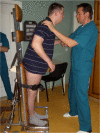Predictive and preventive strategies to advance the treatments of cardiovascular and cerebrovascular diseases: the Ukrainian context
- PMID: 23083430
- PMCID: PMC3565889
- DOI: 10.1186/1878-5085-3-12
Predictive and preventive strategies to advance the treatments of cardiovascular and cerebrovascular diseases: the Ukrainian context
Abstract
Despite great efforts in treatments of cardiovascular diseases, the field requires innovative strategies because of high rates of morbidity, mortality and disability, indicating evident deficits in predictive vascular diagnosis and individualized treatment approaches. Talking about the vascular system, currently, physicians are not provided with integrated medical approaches to diagnose and treat vascular diseases. Only an individual global approach to the analysis of all segments in the vascular system of a patient allows finding the optimal way for vascular disease treatment. As for the existing methodology, there is a dominance of static methods such as X-ray contrast angiography and magnetic resonance imaging in angiomode. Taking into account the world experience, this article deals with innovative strategies, aiming at predictive diagnosis in vascular system, personalization of the biomedical treatment approaches, and targeted prevention of individual patient cohorts. Clinical examples illustrate the advances in corresponding healthcare sectors. Recommendations are provided to promote the field.
Figures













Similar articles
-
The future of Cochrane Neonatal.Early Hum Dev. 2020 Nov;150:105191. doi: 10.1016/j.earlhumdev.2020.105191. Epub 2020 Sep 12. Early Hum Dev. 2020. PMID: 33036834
-
Trial design and reporting standards for intra-arterial cerebral thrombolysis for acute ischemic stroke.Stroke. 2003 Aug;34(8):e109-37. doi: 10.1161/01.STR.0000082721.62796.09. Epub 2003 Jul 17. Stroke. 2003. PMID: 12869717
-
Nanotechnology: an evidence-based analysis.Ont Health Technol Assess Ser. 2006;6(19):1-43. Epub 2006 Nov 1. Ont Health Technol Assess Ser. 2006. PMID: 23074489 Free PMC article.
-
European Association of Cardiovascular Imaging/Cardiovascular Imaging Department of the Brazilian Society of Cardiology recommendations for the use of cardiac imaging to assess and follow patients after heart transplantation.Eur Heart J Cardiovasc Imaging. 2015 Sep;16(9):919-48. doi: 10.1093/ehjci/jev139. Epub 2015 Jul 2. Eur Heart J Cardiovasc Imaging. 2015. PMID: 26139361 Review.
-
The Minderoo-Monaco Commission on Plastics and Human Health.Ann Glob Health. 2023 Mar 21;89(1):23. doi: 10.5334/aogh.4056. eCollection 2023. Ann Glob Health. 2023. PMID: 36969097 Free PMC article. Review.
Cited by
-
VKORC1 and CD-14 genetic polymorphisms associate with susceptibility to cardiovascular and cerebrovascular diseases.Int J Clin Exp Med. 2015 Nov 15;8(11):20444-53. eCollection 2015. Int J Clin Exp Med. 2015. PMID: 26884960 Free PMC article.
-
Nanocrystalline cerium dioxide efficacy for gastrointestinal motility: potential for prokinetic treatment and prevention in elderly.EPMA J. 2015 Mar 11;6(1):6. doi: 10.1186/s13167-015-0029-z. eCollection 2015. EPMA J. 2015. PMID: 25815090 Free PMC article.
-
The efficacy of probiotics for monosodium glutamate-induced obesity: dietology concerns and opportunities for prevention.EPMA J. 2014 Jan 13;5(1):2. doi: 10.1186/1878-5085-5-2. EPMA J. 2014. PMID: 24410812 Free PMC article.
-
Development of biomarker panel to predict, prevent and create treatments tailored to the persons with human papillomavirus-induced cervical precancerous lesions.EPMA J. 2014 Jan 6;5(1):1. doi: 10.1186/1878-5085-5-1. EPMA J. 2014. PMID: 24386936 Free PMC article.
References
-
- Aaslid R. Cerebral autoregulation and vasomotor reactivity. Front Neurol Neurosci. 2006;21:216–228. - PubMed
-
- Berdychevskyy M. Venous discirculatory pathology of the brain. Moscow: Medicine; 1989. p. 224.
LinkOut - more resources
Full Text Sources
Research Materials

